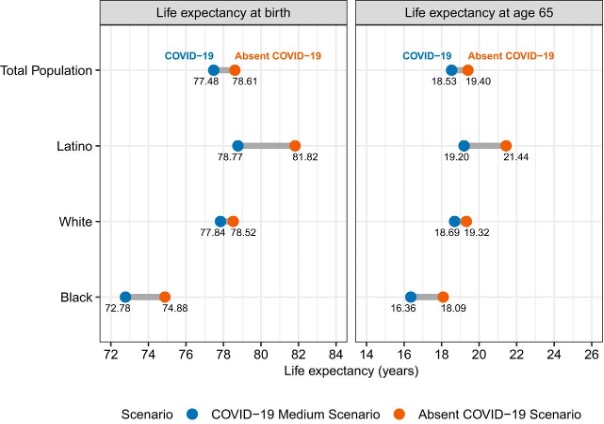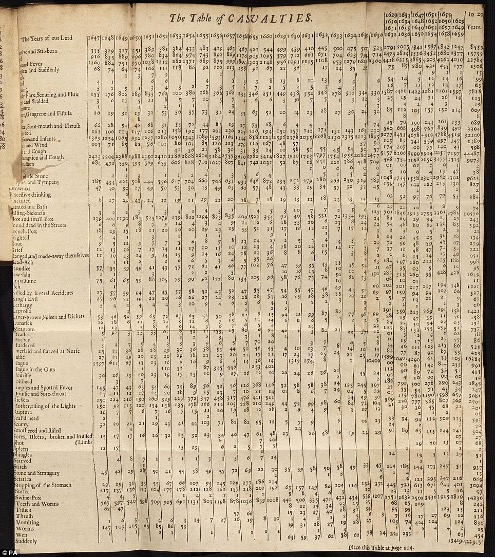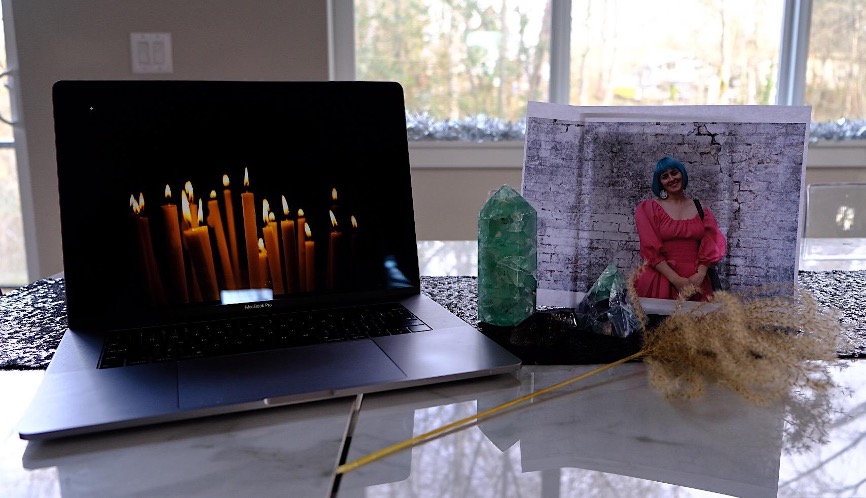“I know I’m young, and dying isn’t something I’m ‘supposed’ to think about yet, but how can I not? Death feels like it is everywhere,” earnestly intoned Autumn, a twenty-five-year-old woman I met in late 2020. Autumn was a recent college graduate whose grandfather and roommate had both died during the vicious summer surge of Covid-19 in Los Angeles. The deep sense of loss she felt—not only from their deaths but also from the lack of national acknowledgment—had led her to seek out others whose lives had been touched by death. Her searches led her to the Instagram account of Caitlin, a well-known end-of-life doula who ran a Zoom workshop series on making peace with mortality. This workshop, entitled “Quality over Quantity,” offered an unassuming space for people like Autumn to share their anxieties about dying through journaling and group discussion. At one such session, twelve women and I filled in coloring pages as Caitlin asked us to imagine how we might picture our deaths. Holding a vibrantly colored mandala up to her screen for everyone to see, Autumn contemplated, “I always used to think I’d die in my sleep, surrounded by grandchildren… I don’t know how I envision it now, though. Maybe it will happen in fifty years or maybe next month. Either way, I’m learning not to assume anything is a given.”
End of Life Doulas and Good Death

Changing life expectancy projections by race and ethnicity since the beginning of the pandemic (Andrasfay & Goldman 2020). [1].
In a time when American mortuary facilities have been overwhelmed with almost 500,000 dead, the assumption that we will all live to our eighties or beyond has become less tenable. I have repeatedly heard these sentiments during my ongoing fieldwork among American end-of-life (EOL) doulas, whose deathcare practices take up these anxieties about the future as evidence of a “deathphobic culture.” Similar to their better-known birthing counterparts, EOL doulas are nonmedical caregivers who provide emotional and physical support during the dying process and have grown in significant numbers over the past decade alongside the rise of other “natural” deathcare practices. Overwhelmingly women, many cite their experiences with structural violence as motivation to question American ideals of a good death as one that happens in old age. This imperative has only intensified during the pandemic as their roles have shifted from attending the dying’s bedside and enacting intimate funeral rituals to acting as “grief shepherds” for their communities through video conferencing technologies and social media. These sessions, which vary from workshops and group meditations to classes for apprentices such as myself, have become forums in which doulas push back against social framings of mortality as a problem to be solved. Aiming to interrogate logics of progress and the “breathless futurology” (Harrington et al. 2006) of biotechnologies like cryogenics and anti-aging innovations, doulas’ political project is one that increasingly takes up one of the most central assumptions of contemporary life in the global North: living a long life. In this post, I trace how their work reorients the self towards death and the future, opening up broader conversations about human life and its relations to quantification, abstraction, and risk. How are technologies of the future like life expectancy practiced and lived with? To what extent have these orientations changed in a time of mass death?
Life Histories and Quantifications of the Future

Table of Casualties in Natural and Political Observations Made Upon the Bills of Mortality, the first life table created by demographer John Graunt in 1676.
In many ways, life expectancy is a figure of a promised future, a horizon that has been so naturalized that it largely avoids study or critique. Emerging in seventeenth-century England, early life tables were meant to estimate the probability of a person dying before their next birthday in a period when ‘early’ death was much more visible and prevalent. These tables (shown above) aggregated population data and historical records to observe mortality patterns and risk in a time when the management of death was just beginning to be rationalized and formalized (Rundblad 1995). However, in the hands of property insurers, who saw this predictive tool’s economic potential, life expectancy also became a calculation of the differential lengths and worth of human life through the creation of life insurance. Over the following centuries, death came to be redefined as an event that ended one’s earning capacity with categorizations such as premature death, living death (disability), or economic death (retirement) (Huebner 1959).
Under this intensified regime of economization, which was predicated on a white, able-bodied, cis-gendered male subject, life expectancy became a privileged mechanism to face death by delaying its broader ramifications and creating an unfounded sense of control over its unknowability (Zelizer 1978; Horlick-Jones 1995). Dominant social understandings of life expectancy as a sort of soothsayer also reinforced Western temporal arcs of human perfectibility as lifespans grew longer with improvements in public health (Lundgren & Houseman 2010). Although these predictions and trends took place at the population level, life expectancy metrics came to have profound effects on individual conceptualizations of how long one might live. Orientations away from death (and towards an increasingly limitless future) are perhaps best exemplified by common phrases like “dying before their time” or “a life cut short.” These expressions have become ubiquitous since the beginning of the pandemic, especially regarding those dying from COVID-19 who were younger and/or did not have known preexisting conditions.

Screenshot from Twitter. [2]
“Have you ever noticed how casually we speak of and think of the future? We do it with no regard whatsoever to the fact that it is a complete and utter illusion. During the pandemic, we started to notice our language and feelings about the future because we couldn’t plan anymore for three months out, let alone three weeks or even three days. People with terminal diagnoses are keenly aware of their ideas and language about the future because they know they cannot rely upon it and realistically, neither should we. Rather than say I’m going to see you on Thursday, I say I would like to see you on Thursday. That way when Thursday comes, if they’re not there, I’m just merely disappointed rather than feeling like we’re both robbed of something we felt entitled to.”
While reckoning with a staggering historical moment, Eshe’s comments problematize social conditioning of the future as an absolute. This kind of orientation, which is heavily informed by the perspectives of marginalized groups such as women and people of color, explicitly works against other normative assumptions that become bundled in with quantifications of life by taking up queer and crip temporalities that do not follow such logics (Muñoz 2009; Samuels 2011). They also vividly illustrate the ways in which death is often conceptualized as an interruption to a life that would otherwise proceed unhindered. As Eshe later reflected, “In my work supporting people through death, I see so many people clinging to life—what they think they can control—yet we simply cannot control death. All we can do is surrender.”
Dying in the Here and Now

The author’s living funeral altar.
The practice that perhaps best displays this attention to the here and now—rather than a deferred future—is that of living funerals. My first living funeral took place on Zoom this past November with forty other participants, mostly younger women. Before we started, Nevaeh gently directed us to set up an altar to ourselves, perhaps with a photo or mirror. A few positioned theirs in front of their laptops so all could see, some using photographs, crystals, incense, and even some herbs picked from a quarantine garden. Once everyone was ready, Nevaeh directed us to turn off our cameras and sit or lay down in a comfortable position. As we all settled into our couches, beds, and floors, Nevaeh began to read from a script that has been passed around many doula circles: “At this time all beings, in one way or another, are dying. Although some of us are closer to death than others, the time of our death is uncertain. If you are not actively dying at this time, imagine yourself as dying, and remember, on some level you are always dying.”
Letting this hang in the air for a moment, she asked us to look at our photographs and imagine how we would be remembered after our deaths. We wrote down our last words and wishes, along with what we would want to say to our loved ones if we had the chance. She then took us through each part of the body, asking us to feel ourselves becoming heavy with the weight of the life leaving us.
“Your body lifts slightly to meet the breath, which does not enter.
Your mental functions cease altogether.
Your consciousness has dissolved into space.
The perception from the outside is that you are dead. Breathing has stopped.
Brain function has stopped.
The body feels no sensation.
Know this empty state.
Know this stillness and surrender to it.
Experience it.
Become space.”
We lay still as if we were dead for what felt like an eternity, although it was probably only for ten or fifteen minutes. Nevaeh then turned on slow harp music as everyone returned to the call. Some women were overtaken with emotion, their tear-stricken faces visible on the small squares of the Zoom screen. Nevaeh asked if anyone wanted to share their experience, to which many responded with testimonies about how they felt overwhelmed but less afraid of dying. One woman, a thirty-year-old from Seattle, described her funeral in liberatory terms, telling us that she felt freer from social expectations of how her life should look. While such meditations take on different meanings for each participant, doula practices like living funerals challenge sequential understandings of the future by bringing death into the present and foreground the experiential, relational, and discursive aspects of temporal existence (Browne 2014). They also urge us to pause, to notice the effects of living and dying in an ever-expanding, non-stop world that, in the words of Jonathan Crary, “disavows its relation to the rhythmic and periodic textures of human life” (2013).
Coda: Unknowability
Quantifying the span of human life is a practice that reveals but also obscures. We see graphs and charts of COVID-19 deaths and shifting life expectancy splashed across news media platforms every day, but this data is only one means of knowing. As I hope to have shown in this post focused on American EOL doulas and deathcare, even amidst a deadly global pandemic, the capacities to feel other presents that “exceed the practices that make up quantification and the surrounds of capitalism” are alive and well (Murphy 2017). Ultimately, our contemporary crises impart different sorts of responsibility and relations to one other—ones that stop to honor our grief and commit to making the world a more livable place, rather than fixating on a future that may or may not come to pass.
Notes
[1] Figure 1. Description. Each table reflects scenarios with Covid-19 and without Covid-19. Data for life expectancy at birth: Total population, scenario with Covid-19 is 77.48, without Covid-19 is 78.61; Latino, scenario with Covid-19 is 78.77, scenario without Covid-19 is 81.82; White, scenario with Covid-19 is 77.84, without Covid-19 is 78.52; Black, scenario with Covid-19 is 72.78, without Covid-19 is 74.88. Life expectancy at age 65: Total population, scenario with Covid-19 is 18.53, without Covid-19 is 19.40; Latino, scenario with covid-19 is 19.20, without Covid-19 is 21.44; White, scenario with Covid-19 is 18.69, without Covid-19 is 19.32; Black, scenario with Covid-19 is 16.36, without Covid-19 is 18.09.
[2] Captured tweet reads as follows: “2 young women I knew have died from Covid. They were both full of life and hope for the future. They had people who loved them and cared for them, but their lives were cut short because our government was too slow to implement a proper lockdown. I will never forgive them for this.”
Works Cited
Andrasfay, T., & Goldman, N. (2021). Reductions in 2020 US life expectancy due to COVID-19 and the disproportionate impact on the Black and Latino populations. Proceedings of the National Academy of Sciences, 118(5). Retrieved from https://www.pnas.org/content/118/5/e2014746118.
Browne, V. (2014). Feminism, time, and nonlinear history. Springer.
Crary, J. (2013). 24/7: Late capitalism and the ends of sleep. Verso Books.
Harrington, A., Rose, N. and Singh, I. (2006) Editors’ introduction. BioSocieties, 1 (1): 1–5.
Horlick-Jones, T. (2005). On ‘risk work’: Professional discourse, accountability, and everyday action. Health, risk & society, 7(3), 293-307.
Huebner, S. S. (1959). The Economics of Life Insurance: Human Life Values: Their Financial Organization, Management, and Liquidation. Irvington Pub.
Lundgren, B. S., & Houseman, C. A. (2010). Banishing death: The disappearance of the appreciation of mortality. OMEGA-Journal of Death and Dying, 61(3), 223-249.
Muñoz, J. E. (2009). Cruising utopia: The then and there of queer futurity. NYU Press.
Murphy, M. (2017). The economization of life. Duke University Press.
Rundblad, G. (1995). Exhuming women’s premarket duties in the care of the dead. Gender & Society, 9(2), 173-192.
Samuels, E. (2017). Six ways of looking at crip time. Disability Studies Quarterly, 37(3).
Schanzenbach, D. W., Nunn, R., & Bauer, L. (2016). The changing landscape of American life expectancy. Washington, DC: The Hamilton Project, June.
Zelizer, V. A. (1978). Human values and the market: The case of life insurance and death in 19th-century America. American journal of sociology, 84(3), 591-610.

1 Comment
I love the emphasis here on temporality–and on decoupling a sense of what constitutes a good life to one of a good death long in the future. Being prepared and ready for death in the here and now reminds me of something Pema Chodrin once said about an inmate who constantly feared death until he didn’t anymore. Once he let his fear go, he started to live in the present. Very Buddhist but, as Kristin shows us here, appropriate for the times we are living in.